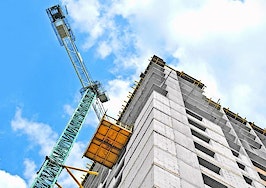- 40 percent of Manhattan's buildings violate at least one current building code.
- New skyscrapers are built on smaller property lots but extend to reach higher altitudes.
- Complex building codes in New York City make it difficult to understand or forecast the future of the city's skyline.
“Those who cannot remember the past are condemned to repeat it,” wrote George Santayana in The Life of Reason, Vol. 1 in 1905.
Santayana was talking about the inevitable changes that take place in the world, like how pre-building code Manhattan helped shape a burgeoning metropolis. Now, though, thanks to building and zoning codes, those properties would never make it past the brainstorm session.
Right around the same time Santayana was publishing those famous words, developers in Manhattan were laying the foundation for the Big Apple. Nearly 75 percent of the current square footage was constructed around or just after the turn of the 19th century.
A New York Times video render shows how new construction of taller, thinner skyscrapers can disrupt the view.
In a New York Times article titled “40 Percent of the buildings in Manhattan could not be built today” (a catchy title, but one that could easily apply to any metro area with grandfathered construction citing historic preservation), the authors outline how building code shaped particular parts of Manhattan. Prior to 1916, zoning code did not exist in New York, which is in the middle of the 30-year era Manhattan’s square footage foundation was laid.
The buildings, the story notes, may contain too many units. Or they do not meet the requirements for setback from the street. Some buildings violate the height limit. Some properties have too much commercial space. An early fear for New Yorkers was that sprouting skyscrapers would leave the immediate surroundings in a shadow. Now, buildings are required to have certain setbacks at various heights in order to limit the solar-cast footprint.
For the 100 years New York’s zoning code has been in existence, older buildings have continued to thrive. “Look at the beautiful New York City neighborhoods we could never build again,” Quantierra‘s Stephen Smith told the New York Times. “It’s ridiculous that we have these hundred-year-old buildings that everyone loves, and none of them ‘should’ be the way they are.”













